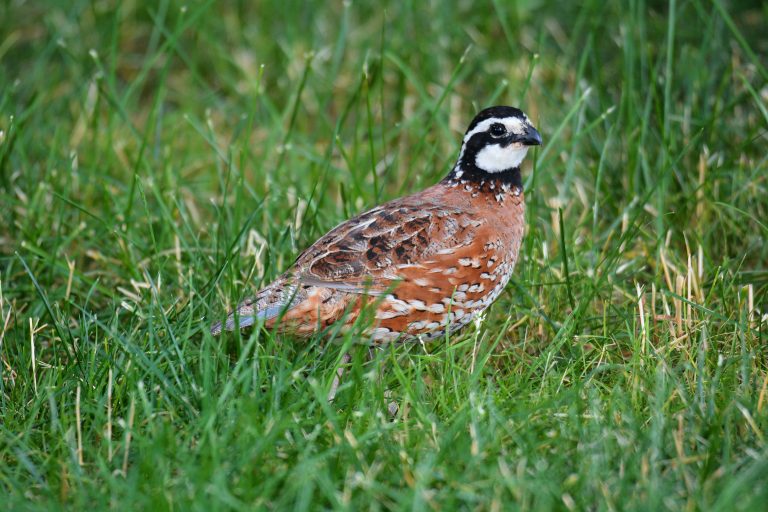Written by: Dr. Jacquie Jacob, University of Kentucky

Bobwhite quail are typically raised for one of two possible objectives. Bobwhite quail are most commonly raised for release into hunting preserves. Quail are also raised as part of intensive meat production. Management practices differ depending on the objective. The release of bobwhite quail is controlled by state wildlife regulations.
Whether you hatch your own chicks or purchase day-old chicks, you will need a brooding area. The first few weeks are critical for the chicks to get off to a good start. The chicks should be placed in a warm area that has feed and water readily available. Young quail can fit through very small spaces, and this propensity for escape should be taken into consideration when designing the brooding area. Young quail also have a tendency to drown in shallow water. To prevent drowning, put a screen over the waterers or place small marbles in the water trays for the first week or two. Chicks will crowd on top of each other when startled, smothering those on the bottom. Make sure all the corners of the brooding area are rounded to prevent piling of the chicks. Use brooder guards for the first week or two. The guard should be removed once the chicks begin to fly so that chicks do not get stranded on the wrong side of the guard.
Hunting preserves and dog trainers want strong, aggressive, fast-flying quail. Good feathering is important for appearance as well as for flying ability. When raised for release, quail chicks must be properly “conditioned.” At six weeks, the chicks should be moved into flight pens at a density of one quail per two square feet. Flight pens should be in a location that is away from people, children, pets, and traffic. This will prevent the quail from getting too accustomed to people and their associated noise. Such birds do not respond well to an approaching hunter in the field. Vegetation should be planted in the flight pens to provide shelter from the weather. To protect the quail from predators, cover the top of the cage with mesh and bury the chicken wire along the base of the pen. Most hunting preserves purchase quail at 15 to 16 weeks of age. The quail should inhabit flight pens for at least six weeks prior to release.
Bobwhite quail raised for meat production are typically raised in a confined facility with controlled temperatures and reduced light. The lower light levels reduce quail activity, improving feed conversion. The lower light also reduces the incidence of feather pecking and cannibalism. Most producers raising quail for meat prefer to raise Japanese quail because these quail grow more efficiently and produce larger carcasses.
The U.S. quail industry is relatively small. As a result, there are very few medications have been approved for use in quail production. Therefore, biosecurity and sanitation are an important part of a management program—it is easier to prevent a health problem than to treat it once it has occurred. Biosecurity involves the purchase of chicks from disease-free flocks (for example, from hatcheries participating in the National Poultry Improvement Plan that have a good reputation), the isolation of quail by age group, farm buildings that have restricted access, maintenance of clean buildings, and proper disposal of dead birds.
FOR MORE INFORMATION
On raising bobwhite quail for meat or release: Bobwhite quail production. Penn State.

